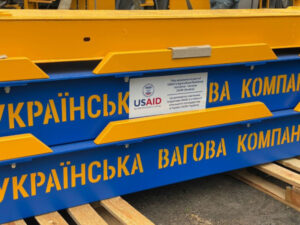
USAID’s Economic Support for Ukraine project has purchased weighing equipment for weighing railroad and road transport and transferred it to one of the largest operators in Ukraine’s grain market, JV Nibulon LLC (Mykolaiv), the grain trader’s press service reported.
“Providing Nibulon’s elevators with modern weighing equipment will speed up weighing of road and rail transport, provide automation and restore previously cut off capacity to the Izmail investment project. Thanks to this, we expect to restore the capacity of supply chains and speed up operations on acceptance and shipment of grain products. Additional weighing complexes will increase the turnover in conditions of increased load on land transportation”, – said the director on interaction with authorities and issues of sustainable development of “Nibulon” Mikhail Rizak.
According to the company, the weighing equipment will be used at four elevators of the company – in Mykolayiv, Poltava and Cherkasy regions.
With the beginning of Russia’s full-scale war against Ukraine, Nibulon was forced to reorient its export chains and compensate for the lack of river navigation on the international inland waterway E-40. The priority was the investment project of the river port in Izmail and strengthening the logistic potential of the company in the use of land routes, recalled the press service of the grain trader.
Currently, Nibulon uses combined routes that combine transportation by truck and transshipment by rail with subsequent transshipment to water transport in Izmail.
USAID’s assistance to agroexporters is part of the Agricultural Sustainability Initiative in Ukraine, which is implemented by the U.S. Agency for International Development. It aims to help Ukraine increase its capacity to produce, store, transport and export grain.
JV Nibulon LLC was established in 1991. Before the Russian military invasion, the grain trader had 27 transshipment terminals and complexes for receiving agricultural crops, capacity for one-time storage of 2.25 million tons of agricultural products, a fleet of 83 vessels (including 23 tugboats), and owned the Nikolaev shipyard.
“Nibulon” before the war cultivated 82 thousand hectares of land in 12 regions of Ukraine and exported agricultural products to more than 70 countries.
The grain trader exported the maximum 5.64 million tons of agricultural products in 2021, reaching record shipments to foreign markets in August – 0.7 million tons, in the fourth quarter – 1.88 million tons and in the second half of the year – 3.71 million tons.
Nibulon’s losses from the full-scale military invasion of the Russian Federation reached $400 mln. Currently, the grain trader is operating at 30% of its capacity, has created a special unit for demining agricultural land and started production of the first vessel for demining international waterways at its shipyards in Mykolayiv.
The grain trader recently raised EUR27m from the Danish Export Investment Fund (EIFO) to increase the capacity of the Bessarabsky branch in Izmail, where an elevator and a flour mill will be built.
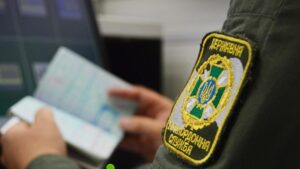
On the Ukrainian-Hungarian border from 16:00 on Monday, April 24, the registration of persons and vehicles on the Hungarian side is temporarily stopped, the State Border Guard Service of Ukraine reports.
“According to information from Hungarian colleagues, the database of the Hungarian Border Police temporarily suspended functioning,” the message in the Telegram channel indicated.
About the resumption of processing on the Hungarian side will be reported additionally.

JSC Ukrzaliznytsia notes a number of problems on the part of the transport system of European countries, which prevent increasing the volume of cargo transportation by rail from Ukraine to Europe.
“The set of technical problems is that the transport system of European countries is not technically ready to transport such large volumes. It needs additional rolling stock: wagons and locomotives,” Deputy Director of the Department of Commercial Work at Ukrzaliznytsia Valeriy Tkachev said at the “Economics of War: May Review and Focus on Infrastructure” conference.
According to him, today Ukrzaliznytsia transports cargo using only 2,000 wagons, or about 130,000 tonnes of cargo per day at the western border crossings, which is approximately equal to 3.8 million tonnes of cargo per month. At the same time, Ukrzaliznytsia’s own capacities allow using 3,422 railcars, or 220,000 tonnes per day.
According to the Ukrainian railway operator, the root of the problem is that the railway infrastructure of Ukraine and Europe is significantly different in gauge. And for the exchange of goods between these two infrastructures, there are only two ways: to reload at the border or to change the wagon bogie. At the same time, Ukrzaliznytsia said that there are not enough transshipment terminals.
“Besides, the most acute problem is the number of wagons on 1,435 mm European gauge track. That is, we, for our part, can transport a much larger volume of cargo, but there is a problem either with a lack of transshipment capacity, or a problem of the availability of European wagons,” Tkachev said.
He also said that there is another technical problem, which is that the infrastructure of European countries has a limited capacity, since it was built for the needs of intra-European transport.
“In Europe, the share of railway transportation of the overall structure of the transport system is 15-35%, while we have 65%. Therefore, the European infrastructure was not initially designed for such large volumes of cargo transportation by rail,” he said.
According to Tkachev, the growth rate of railway transportation is also affected by organizational issues of business, which for many years has been building supply chains towards ports and which now needs to reorient towards border railway crossings.
“Now we have already accumulated 34,000 wagons in the network, which are loaded and are waiting to cross the border,” Tkachev said.
In addition, the presence of a number of red tape procedures at the border, in particular, repetitive procedures of phytosanitary and veterinary control, significantly slows down cargo transportation.
At the same time, the growth in railway transportation continues to recover: according to Tkachev, Ukrzaliznytsia transported 416,000 tonnes of agricultural products in March, and 638,000 tonnes in April. The goal of Ukrzaliznytsia is to reach 1-1.5 million tonnes per month of export of grain products.
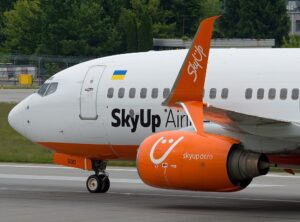
SkyUp Airlines (Kyiv) is planning to transport large volumes of cargo from China to Ukraine via Poland, Romania and Moldova, and is also developing a concept for transporting cargo from the United States, for which it is necessary to go through a special procedure for obtaining FAA permits.
According to the company’s website, the company is also in dialogue with Southern Airways Express (the USA) regarding the branding of their aircraft in the colors of the Ukrainian flag and is discussing the possibility of creating “sister airlines” that could attract SkyUp employees to work on an outsourcing basis.
According to the airline’s website, in March, SkyUp performed 21 evacuation flights on the Chisinau-Tel Aviv route and transported 2,835 refugees to Israel under the repatriation program, as well as their 124 pets.
Today, SkyUp is working on the possibility of performing evacuation flights to Portugal, Sweden and the UK under the Israel-Romania program.
In addition, SkyUp agreed with Suceava Airport (Romania) on the possibility of transporting cargo. This is the closest point to the border of Ukraine.
The company has now also confirmed shipments of humanitarian supplies from Portugal and Israel to Ukraine via Poland, including helmets and clothing for the army.
It is noted that during this time the company transported 112 tonnes of humanitarian cargo. The cargo included medicines, including insulin, baby food, personal hygiene and household chemicals, blankets, diapers, etc. The cargo was distributed according to its intended purpose: for the needs of Ukrainian refugees in Chisinau and various cities of Ukraine.
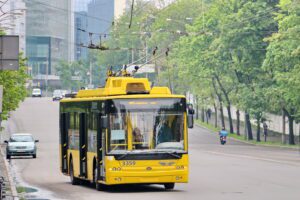
In 2021, Ukrainian cities purchased 170 trolleybuses (including only three used ones), which is almost half as many as in 2020, when 337 vehicles were purchased (including five used ones), AllTransUA reported on Facebook.
According to a report, such a drop in sales may be due to the fact that in 2021 it was mainly the completion of deliveries of 2020 (as part of the trolleybus fleet renewal programs financed by international financial institutions), and new supplies to Kherson and Mykolaiv began only at the end of the year, as well as, in general, the completion of the first wave of EBRD and EIB loan programs.
Kharkiv was the leader in the purchase of trolleybuses, which, in addition to Bogdan T701 trolleybuses under loan programs of IFIs, received leased trolleybuses PTS-12 of the Brovary-based manufacturer Polytechnoservice (in Belarusian bodies MAZ-203) – a total of 59 trolleybuses. This is followed by Mykolaiv, Poltava, Sumy, Zhytomyr, and Lutsk, which bought trolleybuses at the expense of IFIs.
In the structure of financing, purchases at the expense of IFI programs accounted for 68% of cars, and leasing was used only in Kharkiv and amounted to 22%. Budget purchases amounted to only 9% – this year, only Chernihiv (Etalon T12110) and Vinnytsia (PTS-12 with additional assembly at the facilities of the city public transport operator) bought trolleybuses for funds from local budgets.
In addition, for the first time, funding from the state budget was used – at its expense, three Dnipro T203 trolleybuses (in Belarusian bodies) were purchased for Severodonetsk.
In the structure of the supply of new trolleybuses, trolleybuses from Belarusian car sets – PTS-12 and Dnipro T203, assembled on the basis of MAZ and AKSM-321 (D) bodies, assembled at the BKM-Ukraine enterprise from car sets manufactured by Belkommunmash – continued to dominate (54%). Last year, the share of these vehicles was almost 70%.
Bogdan produced 71 trolleybuses (43%) – almost the same as in 2020, another 2% of all sales were for Etalon trolleybuses.
Three used Škoda 24Tr low-floor trolleybuses were delivered to Ternopil.
AllTransUA also analyzed the tram car market of last year, which, according to their data, did not become a turning point for this market (55 trams were delivered versus 39 a year earlier), having continued the trends of the last few years, when some cities bought used equipment, some built new cars using bodies and old bogies, and some bought a small number of modern wagons.
“This year, for the first time in several years, we have in statistics a significant number of new cars [14 units] – thanks to the supply of Polish Pesa cars, Ukrainian Electron and Tatra-Yug cars to Kyiv and Electron cars – to Lviv. Pesa cars and one Electron car were delivered to Kyiv as part of the 2020 contracts for budget funds, and Tatra-Yug cars to Kyiv and Electron cars to Lviv are supplied as part of IFI loan programs,” the report says.
As reported, 20 Tatra-Yug cars will be delivered to Kyiv under the contract (of which three were delivered this year), and 10 Electron cars will be delivered to Lviv (three were delivered).
AllTransUA notes that this year the statistics of deliveries of new trams can significantly improve due to the receipt of the remaining cars in Kyiv and Lviv, as well as supplies to Dnipro (at the expense of the regional budget) and Kryvy Rih (at the expense of IFIs), and the long-awaited promotion of car purchases for Odesa with IFI funding.
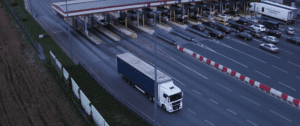
Ukrainian transport companies carried 1.026 billion passengers in January-May 2021, which is 1.4% more than in January-May 2020, the State Statistics Service has reported.
The passenger turnover of transport enterprises in the specified period amounted to 21.5 billion passenger-kilometers, which is 7% more than in January-May last year.
According to the State Statistics Service, 29.9 million passengers used railway transport in January-May 2021 (including city commuter trains), which is 6.8% more than in the same period in 2020, and 426.9 million passengers used road transport (1.5% more).
Air transport reduced passenger traffic by 20%, to 2.4 million people.
In addition, according to the State Statistics Service, in January-May 2021, some 155.4 million passengers used trams (9% less versus January-May 2020), subway carried 174.4 million people (21.1% more), trolleybuses some 236.9 million people (4% less).
During the specified period, water transport carried 0.1 million passengers.
PASSENGER TRAFFIC, State Statistics Service, TRANSPORT, TRANSPORT COMPANIES